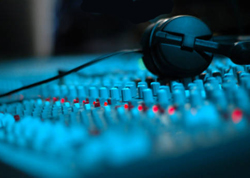
Here’s where it gets tricky. NTSC 29.97fps is the video standard for the US. You’re probably asking, how can you have .97 of a frame? Because 29.97fps is actually 30 “frames” of video running slightly slow. It just takes a little longer to run its full 30 frames, 0.1% slow to be exact, which makes for 3.6 seconds over the course of an hour.
Think how funny it would look at the end of your favorite hour-long TV program if the dialogue was 3.6 seconds late compared to the picture! Ready for more confusion?
Introducing 29.97 drop frame. Remember good old 29.97fps that ran 0.1% slow? A common problem with standard 29.97fps is that, over time, the counter (hours:minutes:seconds:frames) will run slow compared to the clock on the wall.
The display on your video machine says it’s only been an hour, yet the clock on the wall says it’s been one hour and 3.6 seconds. And with broadcast TV stations (usually) running on time, they wouldn’t be too happy about cutting off 3.6 seconds of a show or commercial every hour.
Enter the solution: 29.97 drop frame. This format “drops” pre-determined frames so that that counter display on your video machine runs with the clock on the wall. Drop frame skips frames 0 and 1 at the beginning of every minute that is not a multiple of 10. By doing this “math,” drop frame effectively removes 108 frames per hour, which gives us exactly 3.6 seconds. Neat.
Now that were done with the “address or location” part, what keeps video gear running at a constant speed? The answer is video sync.
Video sync (or house sync) is the timing reference for video which answers the question, “How fast are we going?” House sync is most easily thought as word clock for video gear. House sync lines up all the frames together on video machines, much like word clock lines up all the samples in an audio stream.
House Sync runs between all gear that is locked to picture, including video decks, DA-88’s, DAW’s, etc. There are two standard “speed” rates in the world of picture: 60 and 59.94. The 60 speed is used in film applications, grabbing the 60 Hz out of the wall and turning it into a “pilot tone” recorded to a Nagra or some other type of remote recording device.
As you likely guessed, 59.94 is, is 0.1% slow from 60 and thus, becomes the “speed” standard for video work. Unless you’re doing remote recording for films, your studio will use the 59.94 house sync reference. But then you ask, “What if I get a film project and my studio is setup for 59.94?”
Ideally your new video room would have a House Sync generator and the output signal would be fed to every piece of digital audio and video gear in your studio. Not many audio manufacturers include House Sync input, so there are a few house sync to word clock converters available keeping everything on one master clock generator.
A few rules of thumb to take away from this. First, 95% of your work will be at 29.97fps, house sync of 59.94, and a sample rate of 48k. Stick to those rules and you’ll be set most of the time.
Dealing with the other 5% is what makes you buy stock in companies that make heartburn medications, and also makes you a true audio for picture engineer.
